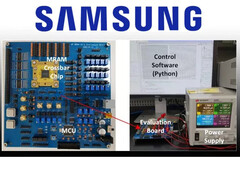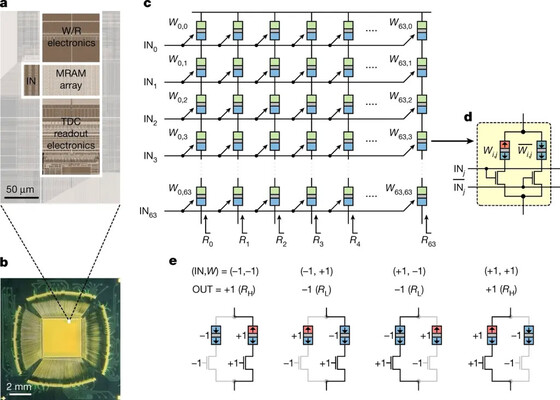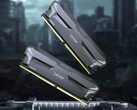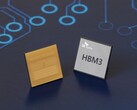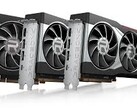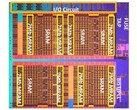Samsung is currently the biggest advocate for in-memory computing solutions, as these could take low-power AI processing to the next level. We have seen Samsung implementing in-memory processing features in its high-end HBM chips last year, but the South Korean company is now exploring the possibility of adding this feature to other types of memory. MRAM (Magnetoresistive Random Access Memory), for instance, seems to have the highest potential for AI-powered applications with in-memory processing, yet its low resistance prevents researchers from experimenting with it in this regard. Samsung recently managed to bypass this problem, presenting a solution with a 64 x 64 crossbar array of MRAM cells that can handle in-memory computing.
The SAIT research team led by Doctors Seungchul Jung, Donhee Ham, and Sang Joon Kim put together a paper published by Nature, which details how the 64 x 64 crossbar MRAM array bypasses the low-resistance limitations via “an architecture that uses resistance summation for analogue multiply–accumulate operations." This solution was tested with different AI applications, and it managed to accurately identify hand-written digits 98% of the times, while face detection worked 93% of the times.
MRAM has been in development for more than 2 decades now, yet its uses are quite limited due to the low resistance issues. Samsung’s researchers identified that the MRAM non-volatile nature combined with its operational speed, endurance and low costs for large-scale production appear to be very suitable for in-memory processing applications, and thus came up with the crossbar workaround. More complex MRAM devices could eventually be used to store biological neuronal networks, as the Samsung researchers note that “in-memory computing draws similarity to the brain in the sense that in the brain, computing also occurs within the network of biological memories, or synapses, the points where neurons touch one another."
While MRAM has its clear advantages for AI-powered applications, it is still unclear if it can replace current DRAM solutions for consumer-level devices. Samsung will most likely push for the adoption of MRAM, but, depending on price, this technology might only be utilized in the server and HPC markets at first.


 Deutsch
Deutsch English
English Español
Español Français
Français Italiano
Italiano Nederlands
Nederlands Polski
Polski Português
Português Русский
Русский Türkçe
Türkçe Svenska
Svenska Chinese
Chinese Magyar
Magyar